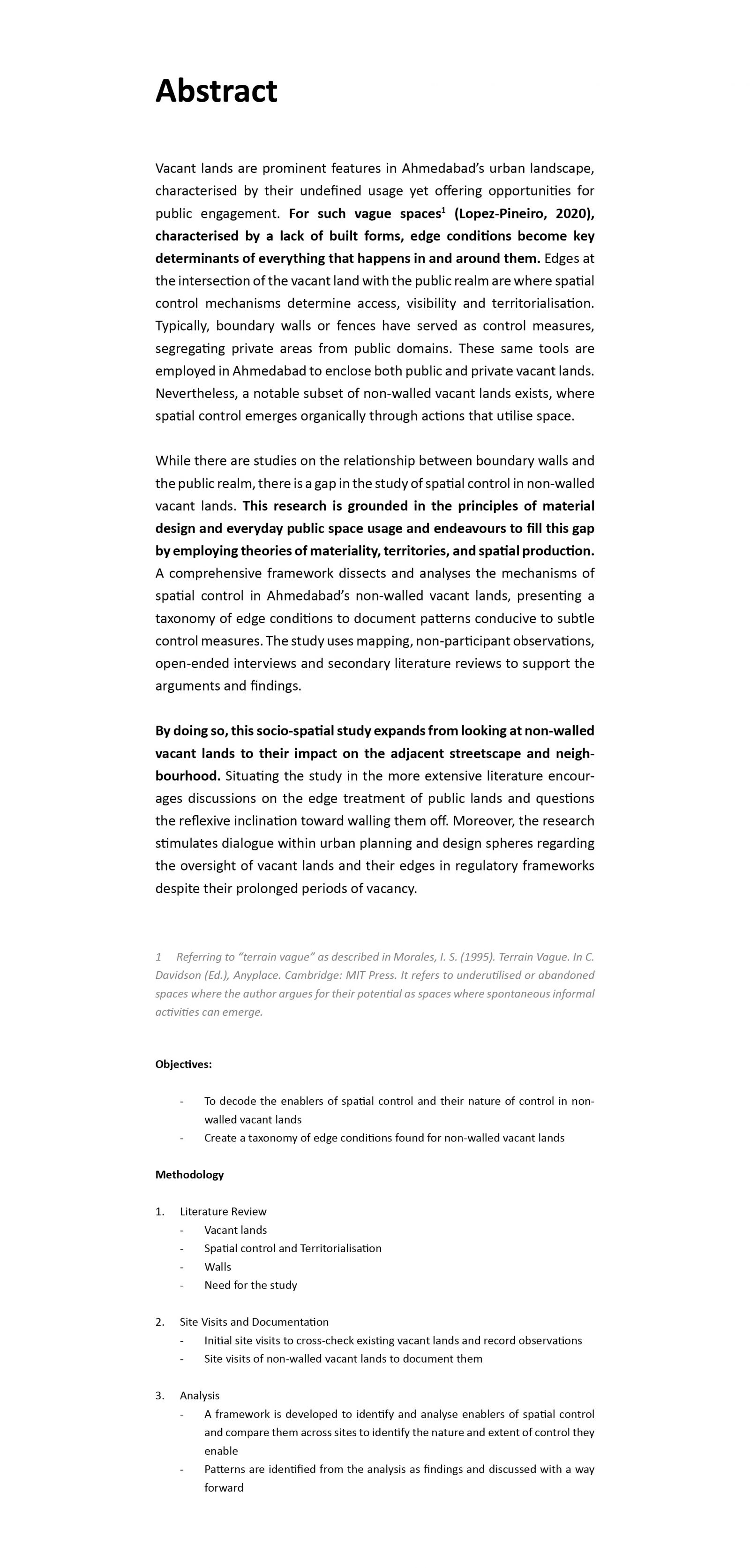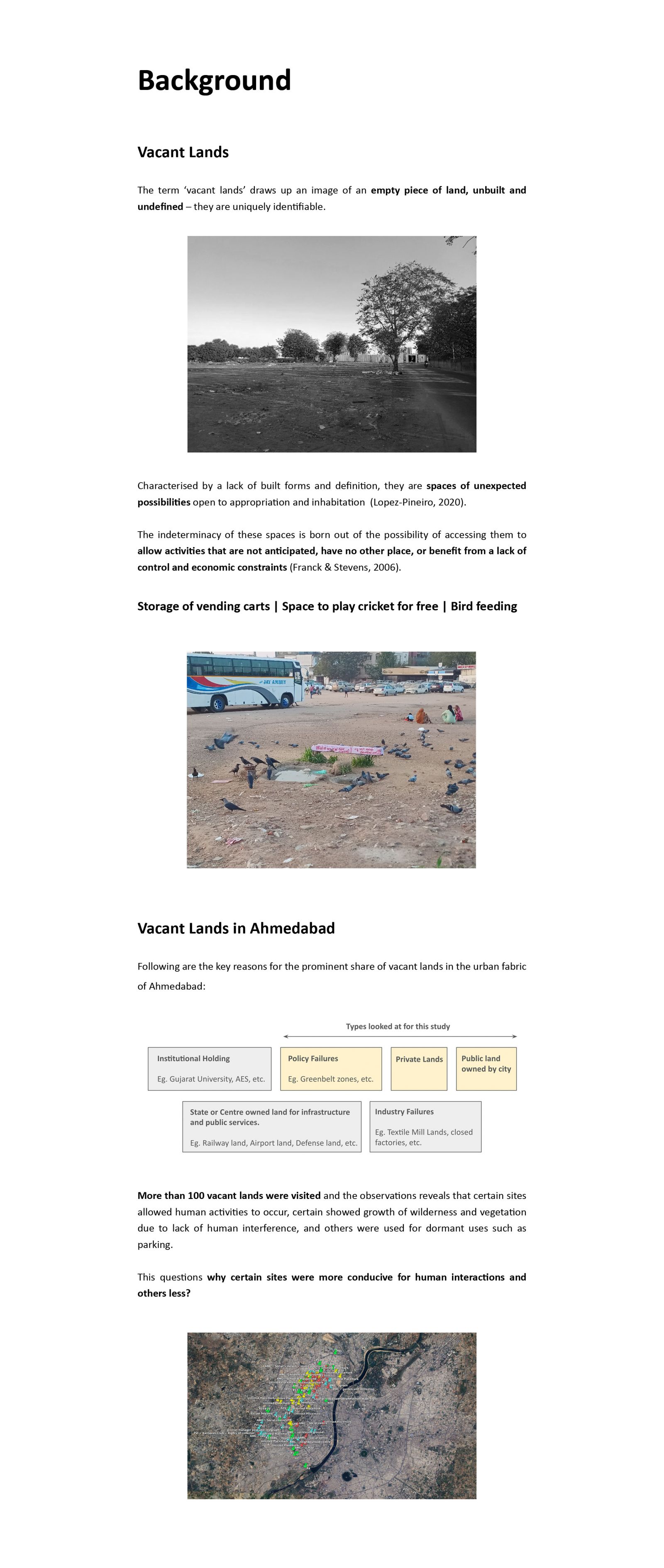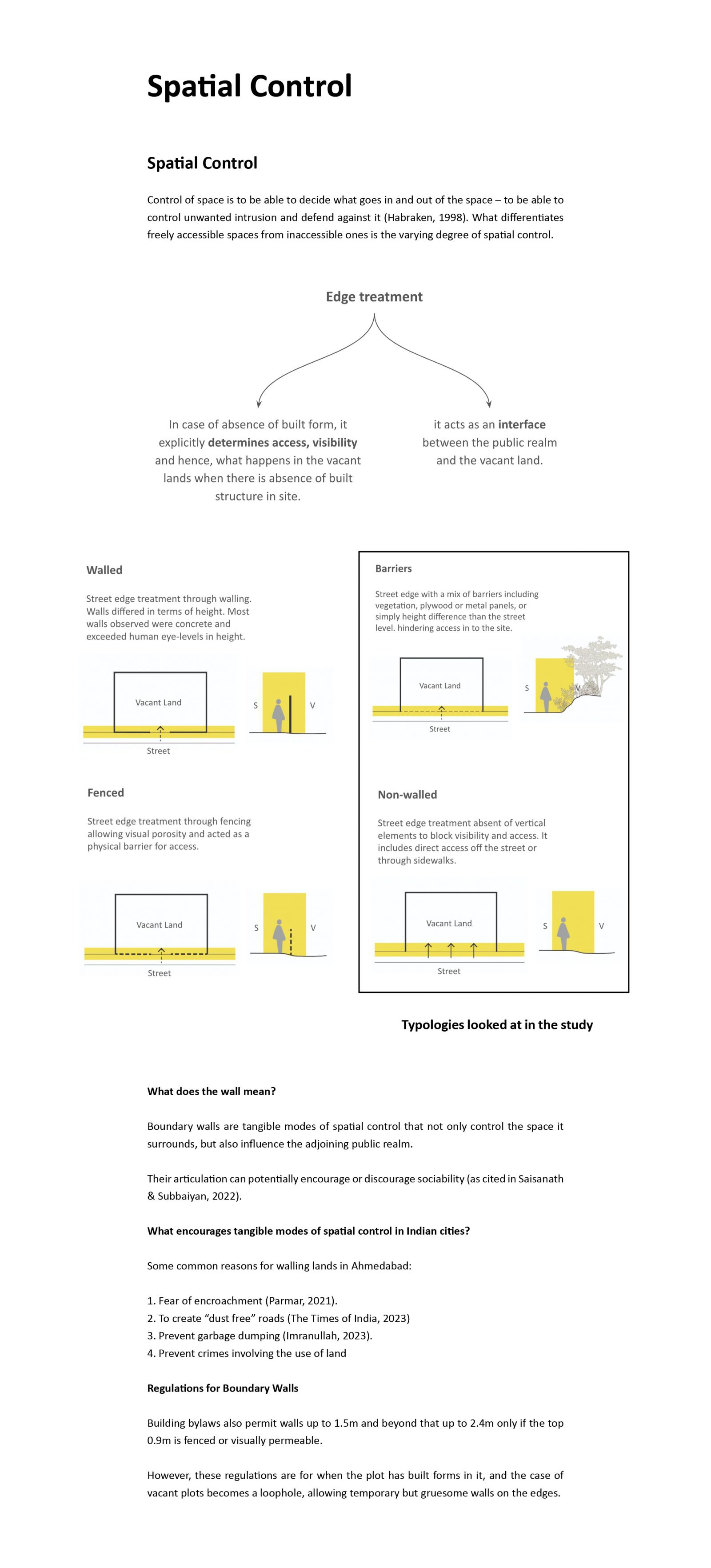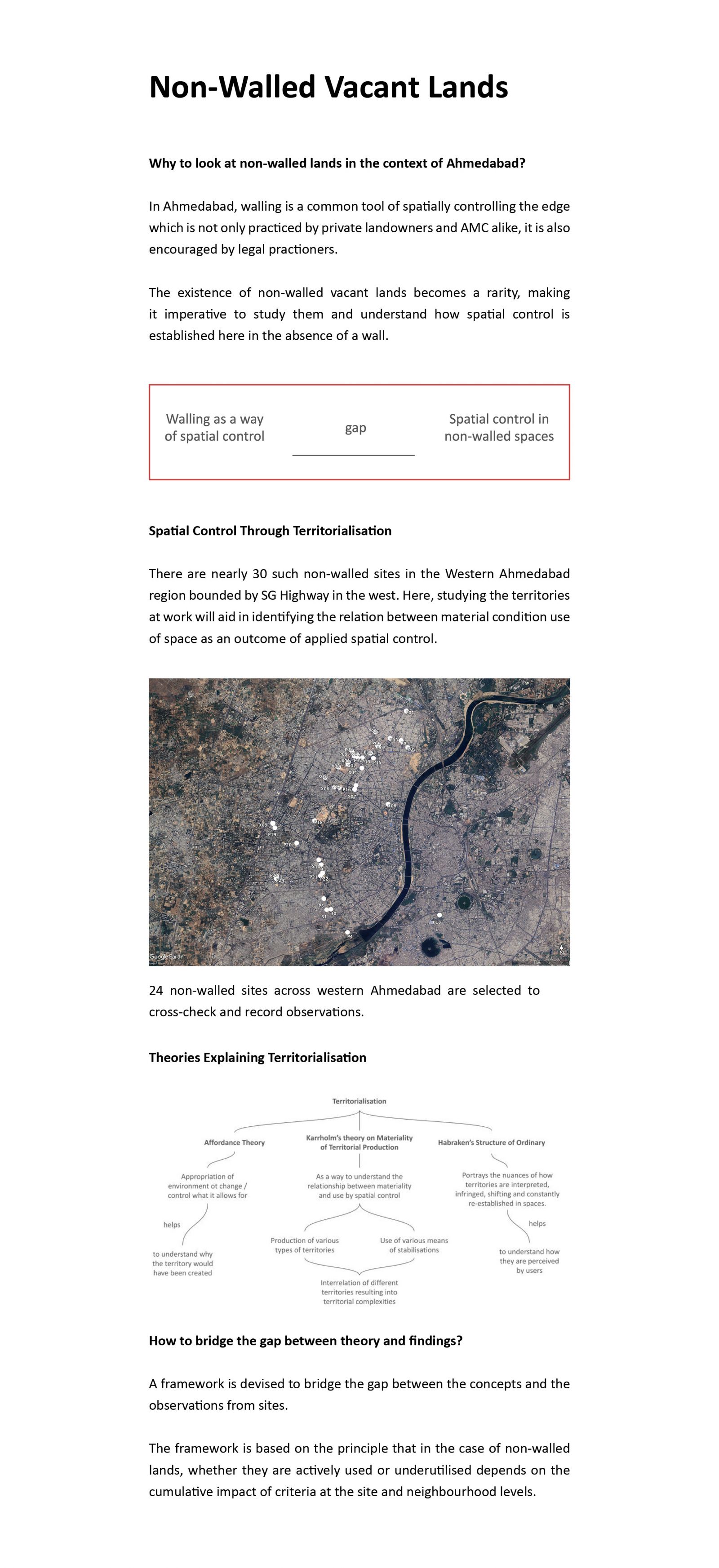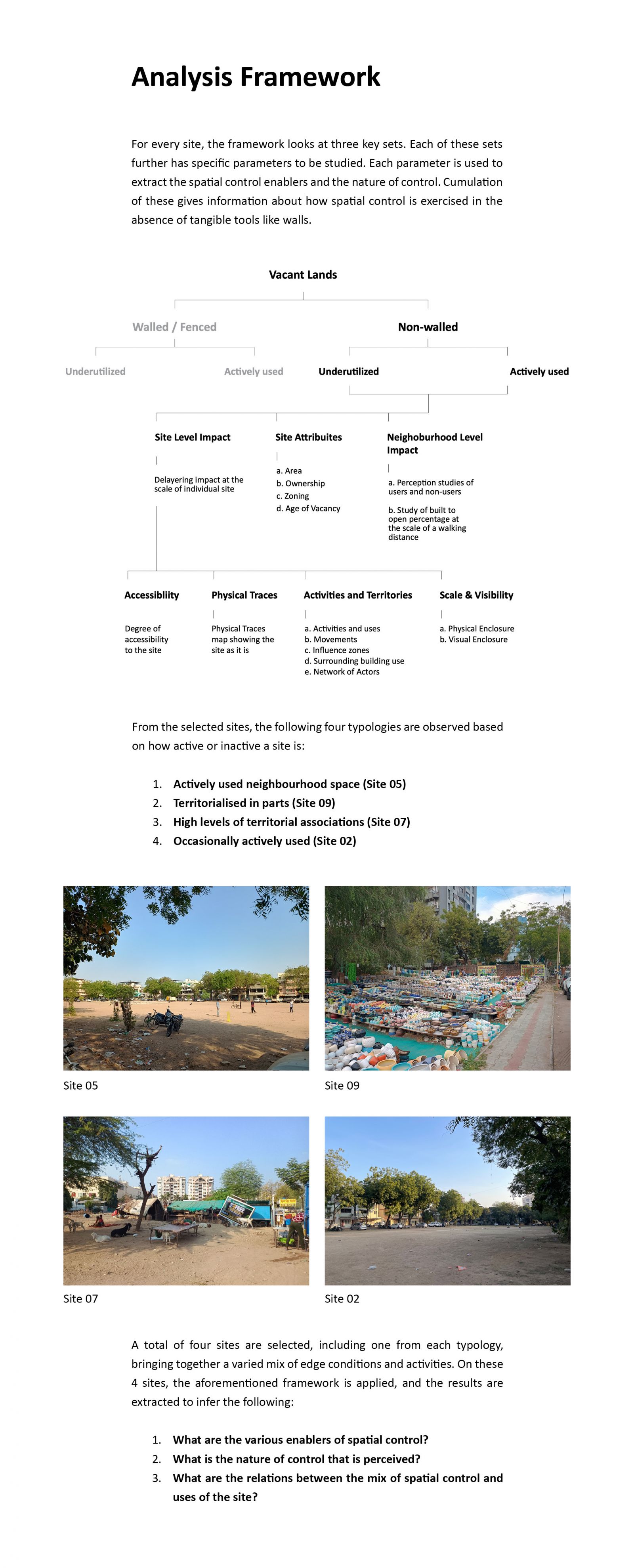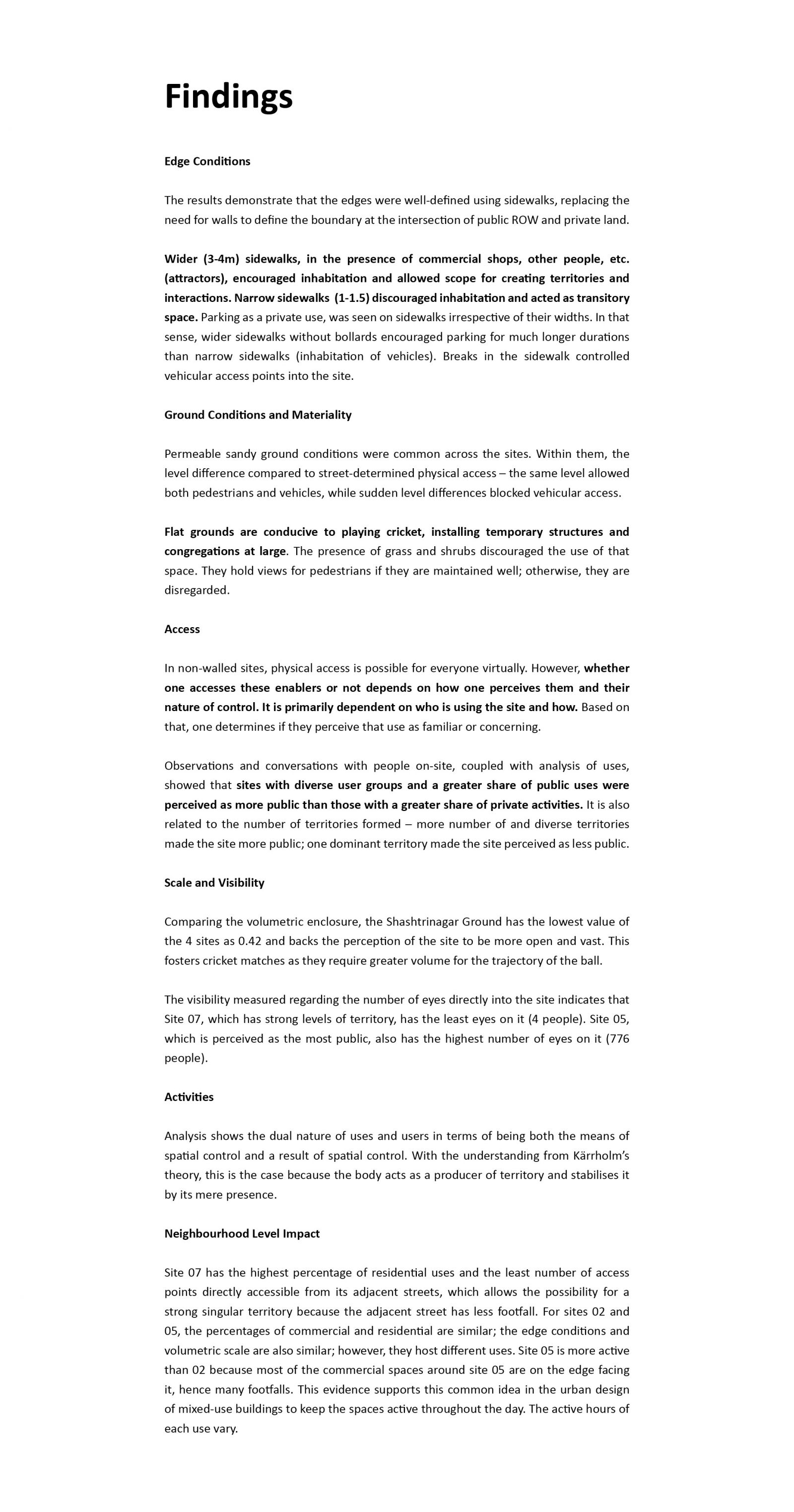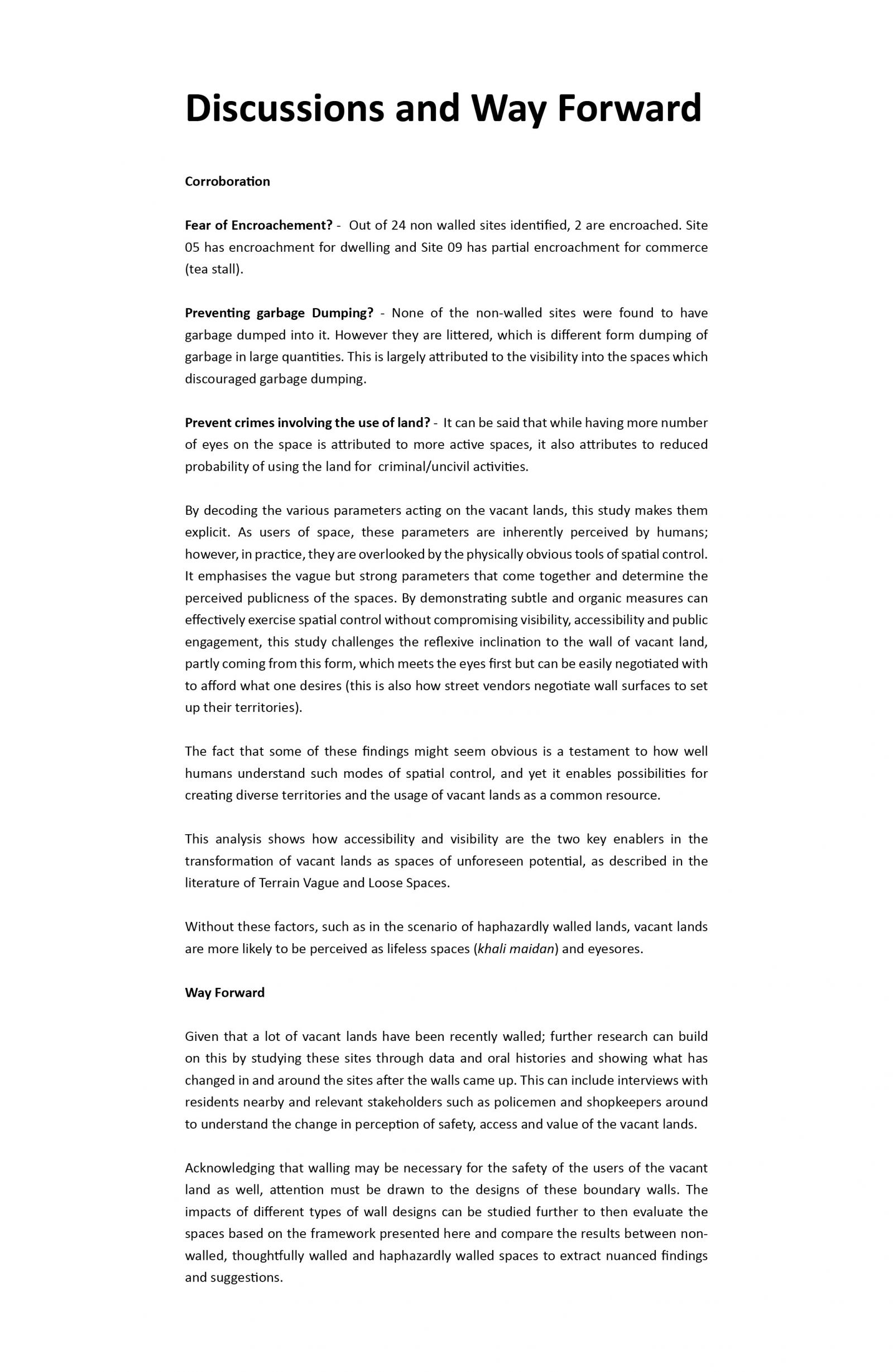Your browser is out-of-date!
For a richer surfing experience on our website, please update your browser. Update my browser now!
For a richer surfing experience on our website, please update your browser. Update my browser now!
Vacant lands make up a significant share of the urban fabric of Ahmedabad. As they are characterised by the lack of built forms, edge treatment becomes a key determinant of spatial control. This research puts walling the edges as a tangible tool for exercising spatial control. It further ventures to expose how spatial control is exercised in non-walled vacant lands of Ahmedabad through an analysis framework. The analysis is done to de-layer the spatial control enablers and their nature of control.
Refer to the full report in the external link to look into the methodology and findings of the research.
